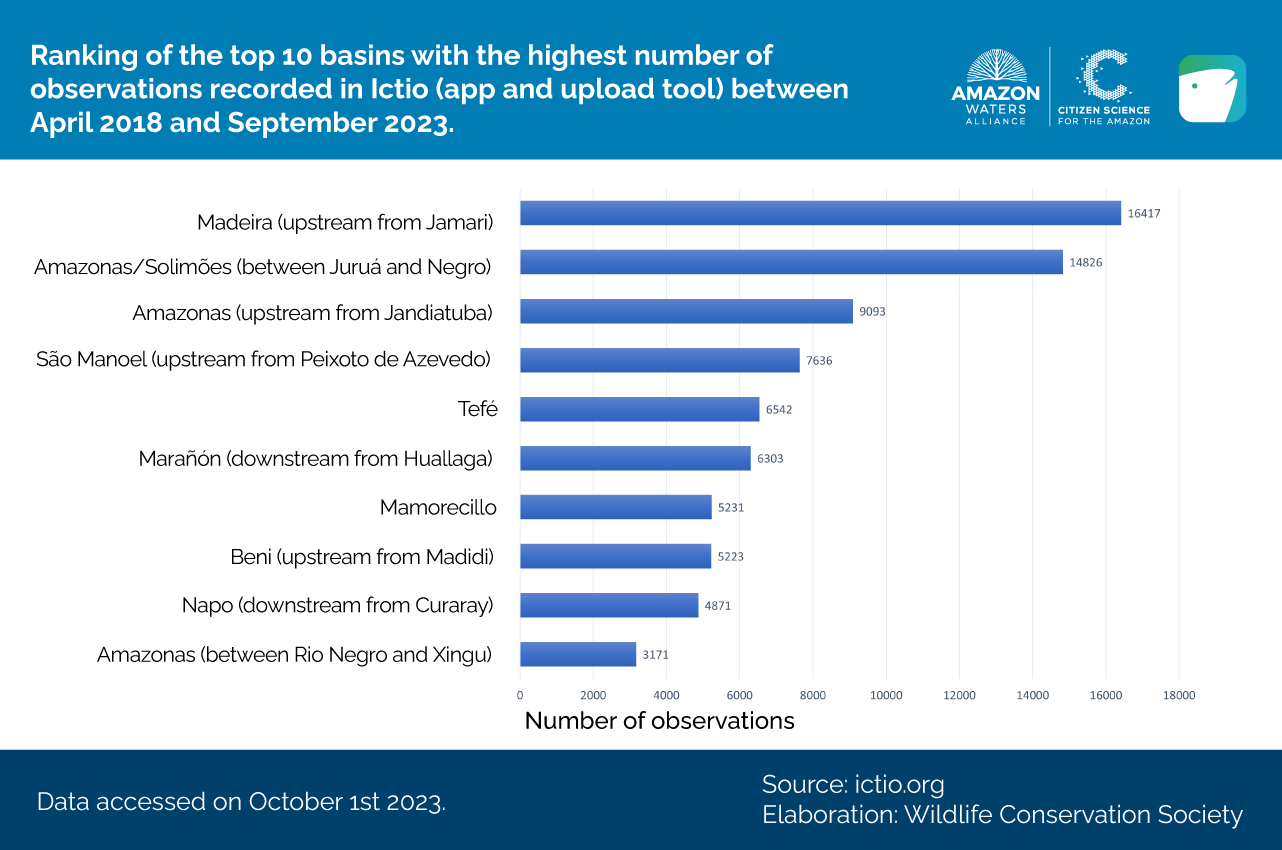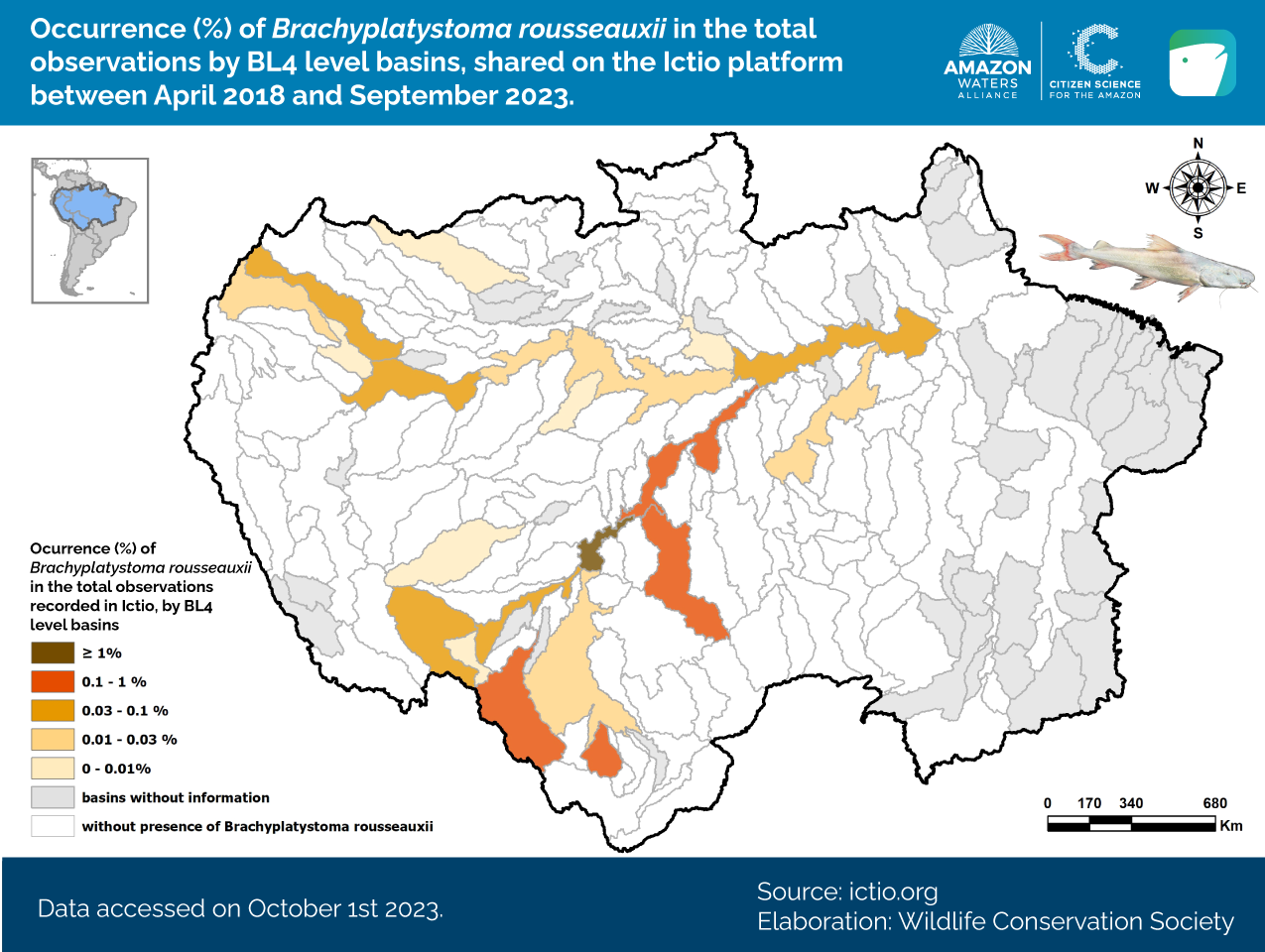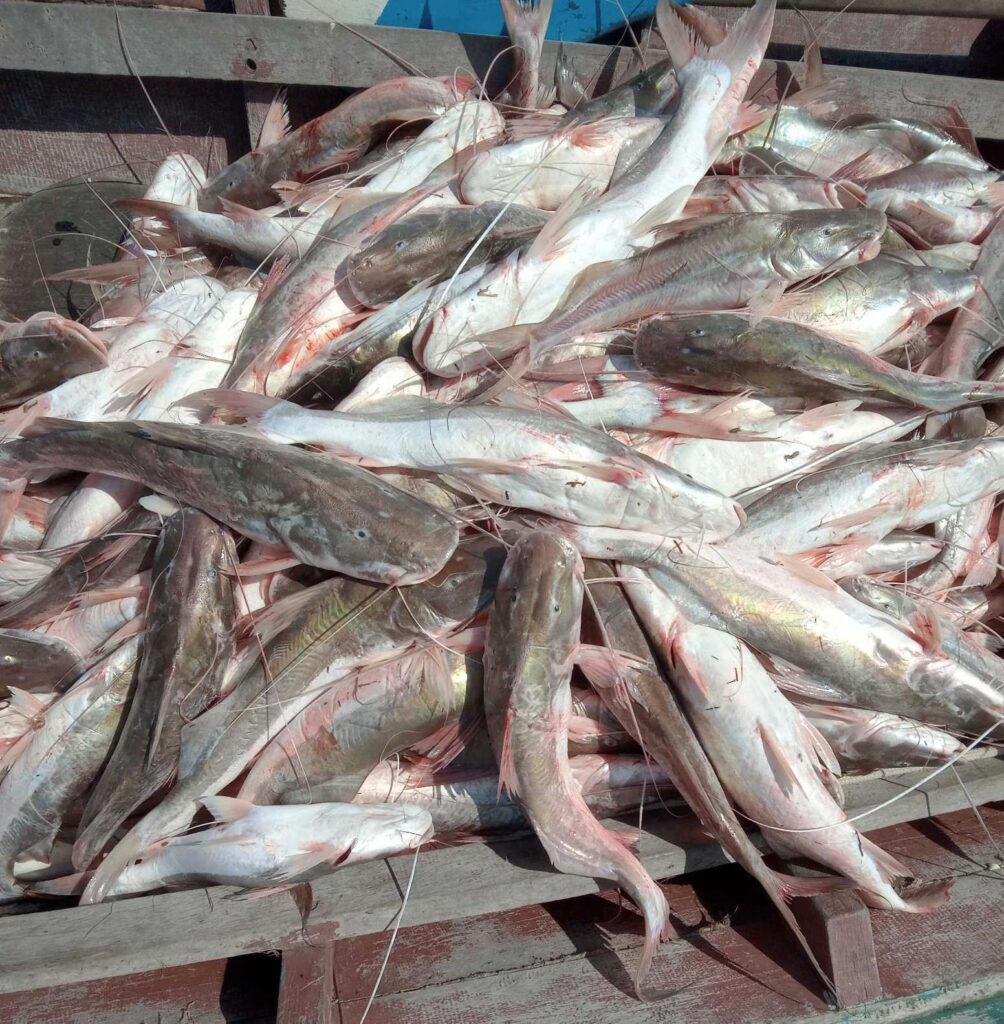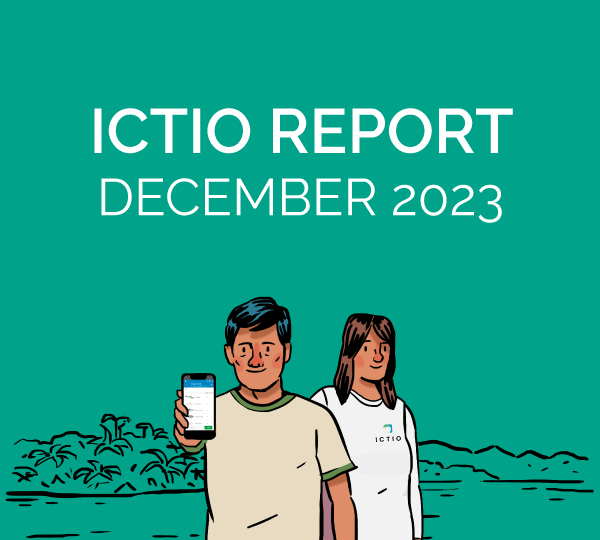
Ictio currently has 107,893 observations of 119 fish species/species groups shared by 695 citizen scientists and organizations (Figure 1).

Figure 1 – As of 30 September 2023, Ictio has a total of 107,893 fish observations in 62,235 lists (fishing events). This information was generated in 153 (77%) of the 199 level 4 sub-basins of the Amazon, the product of the contributions of 695 people and organizations.
Ictio has two ways of collecting data: the Ictio application (download link), which in this quarter saw a 1.9% increase in the number of total observations recorded (totalling 21,647 observations); and also through the ictio.org website. The largest number of records has been uploaded to Ictio through the upload platform, currently recording 86,249 observations (Figure 2).
Uploading through the ictio.org platform has become an important tool, mainly because it allows institutional users to upload monitoring databases that use other forms of collection, such as digital or paper forms, and also other Citizen Science applications, such as Anecdata. With this in mind, a training course was held in September to teach users how to use this important tool.

Figure 2 – By 30 September 2023, a total of 86,249 fish observations had been shared on 48,844 lists (fishing events) by 22 users uploaded via ictio.org.
The fish observations are shared in 153 of the 199 Level 4 (BL4) sub-basins of the Amazon (i.e. 77 per cent) (learn more about the classification of basins used by Ictio in Venticinque et al., 2016 – ‘New Geographic Information System (GIS) on rivers and basins for the conservation of aquatic ecosystems in the Amazon’). The ‘Madeira – above Jamari’ sub-basin continues to lead the number of records with 16,417 observations (Figure 3).
In this quarter (between July and September 2023), the sub-basins with the largest increases were ‘Beni (above Madidi)’, in the Madeira River basin in Bolivia; ‘Napo (above Curaray)’, in Ecuador; and ‘Amazonas (above Jandiatuba)’, in the channel of the Amazonas River, in the region of the triple border between Brazil, Colombia and Peru.

Figure 3: Basins with the most fish observation records shared by 30 September 2023.
The Ictio platform allows the user to directly record 130 species/groups of species, plus the option ‘Other fish’ (‘Fish sp’) to record fish that are not yet in the database. When reporting species using ‘Fish sp’, it is important to note the species caught in the comments field, as well as including a photograph, so that it is possible to document the demand for the inclusion of new species that are of interest to citizen scientists, and possibly include these species in the future.
Of the species/groups of species recorded on Ictio, the yaraquí (Semaprochilodus insignis) continues to be the most recorded species (8,564 observations), followed by ‘Other fish’ (‘Fish sp’ – 7,525 observations) and the tambaqui (Colossoma macropomum) with 6,678 observations.
ICTIO CAN HELP WITH AN IMPORTANT PROPOSAL FOR THE CONSERVATION OF MIGRATORY CATFISH
In February 2024, the Commission of the Convention on Migratory Species (CMS) will vote on a proposal submitted by the Brazilian government to include the dorado (Brachyplatystoma rousseauxii) and the piramutaba (Brachyplatystoma vaillantii) in Appendix II of the Convention. Appendix II does not imply any ban on trade in the species, but it calls for a greater contribution from countries to the conservation of this shared resource.
These fish species are migratory catfish, which make extensive journeys to complete their life cycle. The dorado, for example, spawn in the foothills of the Andes, and eggs and larvae are carried down the rivers to the Amazon estuary by the Atlantic Ocean, where they feed and spend their juvenile phase. After a period of development, these fish begin their journey back to the Andes to spawn and complete their biological cycle, a journey of no less than 11,000 kilometers round trip.
No wonder migratory catfish are priority species for Ictio and conservation targets for the Amazon Waters Alliance: as well as being important models for thinking about conservation at the scale of the Amazon basin and considering its connectivity (find out more in the 2018 article by Goulding and collaborators – Ecosystem-based management of Amazon fisheries and wetlands), they are important commercial species, relevant to the subsistence and food security of Amazonians. In Ictio, there are 3,465 observations of dorado (Figure 4) and 535 observations of piramutaba (Figure 5). Analyses are underway to understand what these records can tell us about these spectacular migrations.

Figure 4: Map of occurrence of dorado (Brachyplatystoma rousseauxii) according to records in Ictio in the Amazon Basin.
Figure 5: Piramutabas (Brachyplatystoma vaillantii) recorded in the Amazon River, Brazil, showing the economic importance of this species for the riverside population. Credit: Santa Maria 03/Macaulay Library at the Cornell Lab (ML368069491)
The figures in this note and other data interpretation products are available at the link below.
GLOSSARY
Checklists: Lists of fish caught in a fishing event.
BL4 Basins: Basin level 4 is the scale that delineates all tributary sub-basins between 10,000 km² and 100,000 km².
Observations: Records of species/groups of fish species caught in the Amazon Basin.
Users: Amazonian citizens using the ICTIO application or platform, consisting mainly of local and indigenous peoples, individual fishers, management groups, associations of fishermen, and scientists.

This note is made possible thanks to the support of the Gordon and Betty Moore Foundation and of the people of the United States through the United States Agency for International Development. The content is the responsibility of the Wildlife Conservation Society and does not necessarily reflect the views of the Moore Foundation, USAID, or the United States Government.






